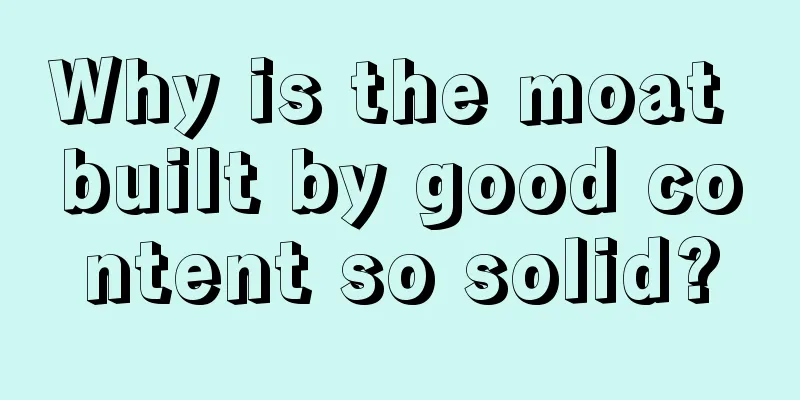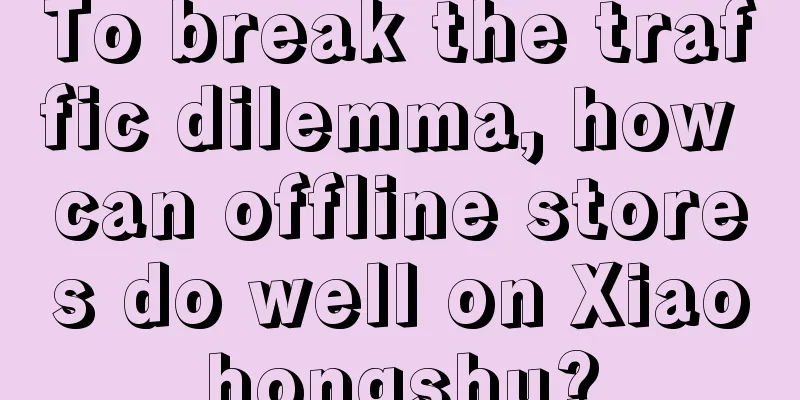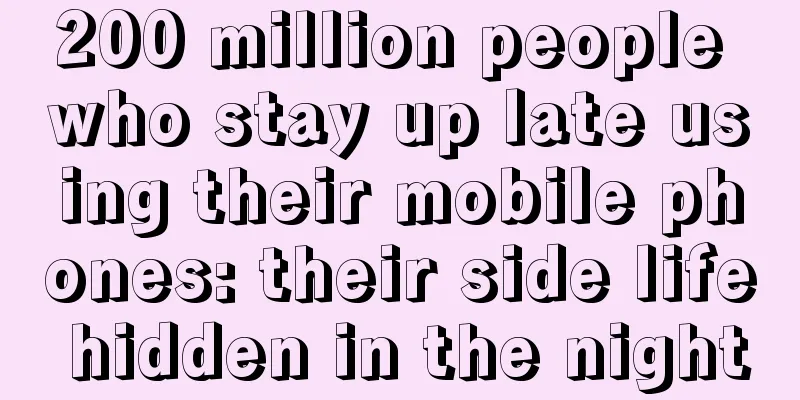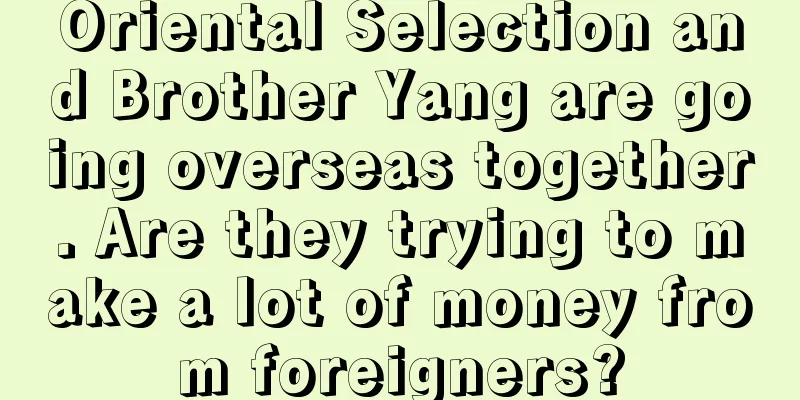Five common senses to get through the new consumer brand positioning
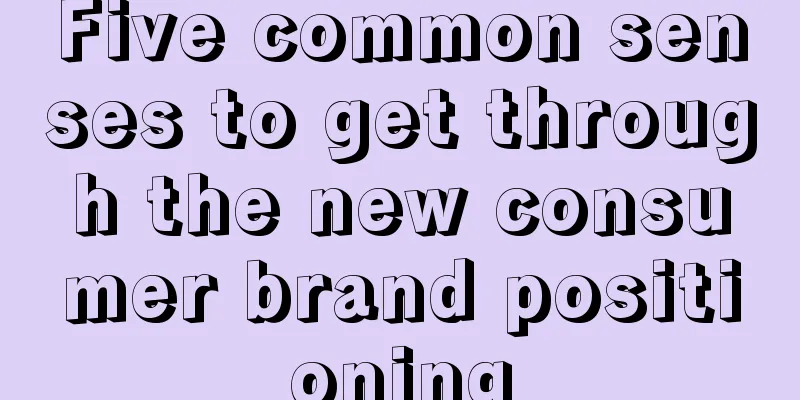
1. Common Sense 01: Symbolic ConsumptionHigh-end products should encourage consumers to waste time on beautiful things and create emotional resonance. What is important is not the product but I understand you. Luxury goods should enlarge the symbol to become a well-known label. The bigger the logo, the more people will love it. Mass products should either convey the joy of being within reach or the sense of reality of being big and thick. Just post pictures and the truth here. For low-frequency products, you need to magnify the scenes. There is one for working overtime, one for shopping, one for watching movies, and one for nothing. French sociologist Jean Baudrillard once said: “People never consume things for their own sake (use value), they always use things as symbols that can highlight themselves. In the world of commodities, there is never one more product, nor one less product. If your product cannot label itself and become a symbol of consumption/symbolic consumption, then your product cannot obtain a real brand premium. "Does our wardrobe really lack this T-shirt? Of course not, but we always lack symbols to prove ourselves. Maslow's hierarchy of needs theory: divides human needs from low to high into seven levels: physiological needs, safety needs, social needs (needs of belonging and love), respect needs, knowledge needs, aesthetic needs, and self-actualization needs. There are two major categories of needs in these seven levels:
Based on Maslow's hierarchy of needs, we can divide the seven levels of needs into three corresponding stages, namely: the food and clothing stage to solve the survival and security needs, the well-off stage to solve the belonging needs, and the wealthy stage to solve the aesthetic, knowledge, and self-realization needs. At different stages of needs, there are completely different needs for the functional value, use value, and symbolic value of the product. The same type of product can have a world of difference in price if it meets different levels of needs. An ice cream can cost from 6 yuan to 66 yuan. Zhong Xue Gao has transformed ice cream from a relatively low-level basic category in Maslow's hierarchy of needs to a self-centered category, or even a superego category. The brand's positioning divides its consumer groups, and consumers form a dramatic "separation" from others in the symbolic consumption of ice cream, achieving symbolic consumption and symbolic consumption, thereby enhancing the product's premium ability and surpassing the physical attributes of ice cream. A pair of yoga pants can also be sold from 99 yuan to 999 yuan. 99 yuan satisfies the functional value, followed by the use value, and then the symbolic value. Lululemon has formed a consumer symbol by shaping its unique brand value. In real life, you will see two types of people become loyal users: a store clerk once made a portrait of the users who came to the store to buy, who were rich and crazy about sports, and the rest were mostly yoga instructors. Their common appeal is that their bodies need to be seen (the need for belonging and love). But for those who no longer have the ambition to show off, they just sincerely believe that they need to exercise, and they have left the contempt chain and reached the stage of self-realization needs. 2. Common Sense 02: Law of ImitationThat is, 1% of people influence 9% of people, who in turn influence 90% of people. High-end product consumption often has a characteristic, namely structural consumption. From top to bottom, it is both the "1990 Law" and the law of imitation. 1% of KOLs, from top to bottom, 9% of KOCs, radiate to the surrounding areas, and 90% of the general public. This structure is the same as high-speed rail seats, 1% are business class seats, 9% are first class seats, and 90% are second class seats. French sociologist Tarde proposed the "grass-planting psychology" in his book "The Law of Imitation". He believed that "everyone has the habit of imitating others, and this imitation is the most basic social relationship". Tarde also proposed three laws of imitation:
Imitation is the most basic social relationship and the ultimate element of social behavior. Society is a group of individuals who imitate each other. Social relations are basically imitation relations. Combined with the innovation diffusion curve, how does a new product or brand become popular? In the end, it is just a small group of people who try the product first, and then it causes the masses to imitate. The same is true for real consumption: According to a survey by Clour, 67.8% of users believe that seeding content has a great influence on product selection and final purchase behavior, 74% of users have purchased seeded products, and 80.7% of users will complete the purchase within a week after being seeded. KOC/L marketing is essentially a kind of consumer imitation. Digging deeper, the root of imitation lies in identification. This includes: identification of identity, emotions, attitudes, and values. Three levels of social relationship imitation: acquaintances and friends, opinion leaders, and celebrity effects. Four elements of imitation: scene, label, language, and culture 3. Common Sense 03: Extremely AbsurdCreating a bigger, more complete, and better company to surpass competitors is like throwing an egg against a rock for a startup. Startups should maximize a single factor, focus on the most critical single factor, and concentrate their superior strengths to make a breakthrough. Munger said: Once a company achieves something almost absurd in an important link, it has a winning system. In fact, good businesses can live in people's hearts, but it is not easy to live in people's hearts. Users will hardly remember ordinary or mediocre products and services. What can make users remember and be moved are those almost absurd qualities or services. Focusing resources on a single point and a single element will bring about the peak experience of word of mouth. Because the extreme absurdity generated by a single factor is the easiest to trigger strong memories and goodwill among users, and it is also the easiest to establish popularity and open up relevant mental connections among users. Once this kind of traffic returns, its brand will inevitably benefit. The key to a company's success lies in "maximizing a single factor", that is, the company should focus on a core factor of the first curve, invest heavily in resources, identify the breakthrough point through a 10-fold change in a single factor, and then invest all resources to maximize the single factor and break through the threshold. This requires the founder's judgment and execution. Xiaomi has achieved an almost ridiculous price-performance ratio and gained a good reputation; Apple has taken the experience to the extreme and pioneered the smartphone; Pangdonglai has taken the service to the extreme and built a moat; Mixue Bingcheng has achieved an almost ridiculous price and achieved scale. 4. Common Sense 04: Brand MoatTraffic occupies the channels and brands occupy people's hearts. The essence of traffic is buying and selling (buying traffic and selling goods). Only when consumers are willing to pay a premium for the brand and pay for the brand, the company has a real moat. This is also the value of building a moat. In terms of product dimensions, for the same functions and categories, once consumers’ minds are saturated, it will be difficult for you to break into the market again. Understanding this, we can understand the underlying logic of building a brand moat: opening up new mental spaces through differentiation. Five differentiation methods:
Let's take a look at how Uni-President relies on its big single products to share the market with Master Kong: Master Kong dominated the country with its braised beef noodles. At its peak, it was equivalent to the instant noodle market, accounting for one-fifth of the national production and 40.6% of the market share. To this day, braised beef noodles are still synonymous with instant noodles. In the ten years of competition with Master Kong, Uni-President launched more than 100 flavors of instant noodles, but failed to compete with Master Kong's braised beef noodles. It was not until 2008 that Uni-President launched Laotan Pickled Cabbage Noodles. From October of that year to 2012, in just four years, the revenue of this Laotan Pickled Cabbage Noodles increased 20 times to 3.5 billion. Not only that, due to the success of Laotan Pickled Cabbage Noodles, Uni-President achieved double growth for the first time in 2008. In 2009 and 2010, Uni-President's instant noodle business increased by 23% and 67% respectively. Another example: Big single products are the "moat" of wine companies, and "branding" is the "moat" of big single products. In essence, products and brands are the inside and outside of the moat, the width and depth of the moat. The brand is the width of the moat, and the product is the depth of the moat. Only products + brands can form a strong and lasting moat, and then establish a new cognitive advantage among consumers. Xijiu's 10 billion scale is more than half due to Jiucang 1988; but if there is only Jiucang 1988 without the protection of Xijiu brand, how can it continue to create big single products? The process of creating a big single product is equivalent to the process of "brand productization", which allows a high-end brand to have a practical product. But in the wine industry, a brand drives too many products, not just a single big product. At this time, the big single product must be able to realize the "branding of the product" in turn, which is the "moat" of the big single product. Otherwise, the product and the brand will be opposed to each other, and even the product and the brand will be two separate things. 5. Common Sense 05: Crossing the ChasmInnovators + early adopters tend to pay more attention to new products. Among this group of people, there are often a large number of opinion leaders + trust agent consumers. This group of people (innovators + early adopters) plays a role in promoting the initial entry of products into the market. At this stage, it is necessary to maintain a high degree of focus (price, appearance) on a single product and a single phase to consolidate the brand impression. When a product has passed the innovator + early adopter stage and has reached the stage of crossing the chasm, it needs to go from a hot product to a hit model, from a product to a series. The usual practice is to cover the price in three levels: high, medium and low, in order to meet the multiple needs of the user level. Some will also create new brands, of course, this depends on whether the organization's resources can cover it. From a single channel to multiple channels, from a single hit product to multiple product extensions, from shared domain traffic to private domain operations. One is to seize the word-of-mouth and communication brought by innovators + early adopters, and the other is to amplify word-of-mouth and communication. "First" brings a demonstration effect, which is a strong reason for choice. If, after crossing the chasm, we do not focus on amplifying effective signals, we will continue to win in a small battlefield, while ignoring the role of high-potential signals. High potential is still within the category, returning to the potential of the category, amplifying the potential of the category itself through effective signals, and at the same time starting to parasitize the scene, relying on the scene to increase the frequency and frequency of consumption. Author: Houshan Keju; Official Account: New Consumer Brand Research Society (ID: PDD6977) |
<<: Dig deeper, the truth behind beer diapers
Recommend
Which is better, Amazon North America or Amazon Europe? What is the monthly fee for Amazon Europe?
In the wave of cross-border e-commerce, Amazon, as...
Douyin group buying: huge traffic "troubles" offline merchants
This article introduces several major problems tha...
What is cross-border e-commerce operation? What are the daily tasks of operation?
There are many merchants doing cross-border e-comm...
Miaoya Camera is just one step away from becoming the first AIGC screen-sweeping case
Why did the Miaoya Camera, which quickly became po...
Taobao Ugly Things Awards Ceremony: Aesthetic Lowland or Commercial Highland?
The third Taobao Ugly Things Awards Ceremony annou...
Xiaohongshu's monetization model and 6 types of notes
This year, Xiaohongshu became the CCTV Spring Fest...
An ordinary girl created her own cultural and creative brand through Xiaohongshu, with 45,000 views for one video
"An ordinary girl's road to success, Xiao...
What are Amazon restricted products? Amazon restricted products list
After we open a store on Amazon, we have to upload...
We talked to more than 10 brand owners about why it is difficult to plant grass on Xiaohongshu
Xiaohongshu has undergone a series of organization...
How long does it take for a cross-border transfer to arrive? How long does it take for a long-distance transfer to arrive?
Nowadays, international trade is very popular. Man...
My experience of missing five opportunities to make money from self-media
Sometimes, some opportunities are right in front o...
A brief history of CEO live streaming in China
The birth of the Internet PR industry is closely r...
Complete! [Business Analysis Model] Construction Guide
In data analysis and business optimization, buildi...
How to transfer money from cross-border e-commerce back to China? What are the payment methods for cross-border e-commerce?
As globalization continues to deepen, cross-border...
What are the tips for optimizing Shopee titles? How to run a good store?
On the Shopee platform, the title is one of the im...
